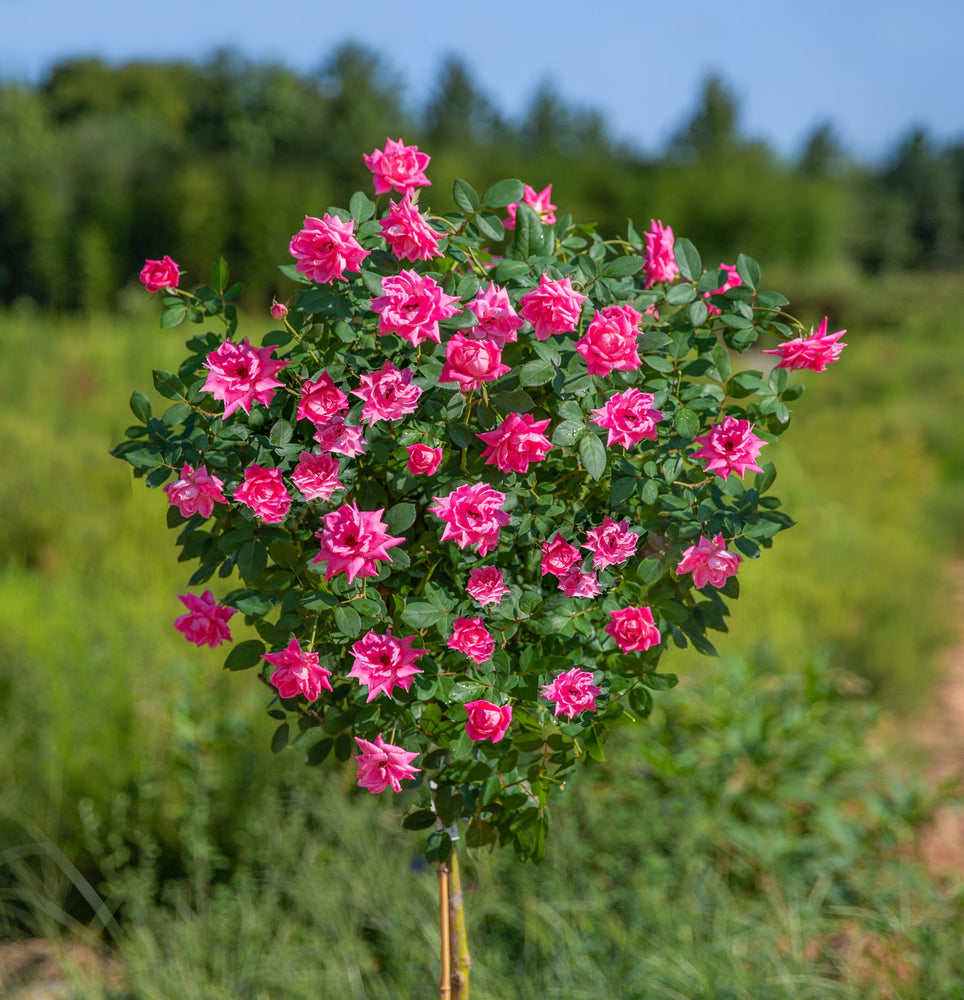
Foliage is dark purplish-green in summer, turning purple to burgundy in fall. Features single, lightly fragrant, cherry-red roses to 3.5” diameter that bloom in clusters from May to frost. It is best noted for its ability to bloom in as little as 3 hours per day of direct sun with excellent disease resistance. KNOCK OUT is a compact shrub rose that typically grows to 3-4’ tall and as wide. Genus name comes from the Latin name for rose. Plants can be allowed to grow large with minimal pruning. They do not require the heavy pruning required of hybrid tea, floribunda and grandiflora roses unless being pruned to control size. But parking strips and other arid areas are no challenge for Knock Outs.

If you suggested planting an Old World cultivar in a parking strip 50 years ago, you would have been laughed out of the room.

They are a very diverse group of hybrids and usually produce clusters of flowers several times a year but some may bloom just once in spring. Knock Outs can grow in places where most people would never have dreamed of planting a rose in the past. Shrub roses are usually large-growing bushes between 4-10 feet tall and as wide. With Knock Out roses, you can drink in the beauty of colorful blossoms from spring all the way until frost, without having to worry about deadheading and other tasks.Rosa is a genus of about 150 species of deciduous (occasionally evergreen) shrubs and climbers noted for their beautiful, often fragrant, single, semidouble or double flowers which are borne singly or in clusters on often prickly stems clad with 5-9 leaflets often having toothed margins. I love exploring garden design ideas, and admiring a new or updated garden is always delightful. Whether you are just now learning about these wonderful, low-maintenance roses or have been a fan since the beginning, you will find that landscaping with Knock Out roses is enjoyable from beginning to end.
#Knock out roses how to#
Learn more about the best companion plants for roses and how to create a stunning rose garden. In container plantings, surround a Knock Out rose with bacopa, licorice plant, sweet potato vine, calibrachoa, or blue star creeper. Or plant them alongside dianthus, hostas, delphinium, coral bells, Shasta daisies, or artemisia. In a formal garden, these classic plants look elegant next to boxwoods.
#Knock out roses free#
Knock Out roses pair well with many other plants, so feel free to get creative as you delve into landscaping with Knock Out roses. ‘Radgor’) - 3′ shell pink with yellow center

#Knock out roses trial#
In 1989, after 15 years of trial and error, Will Radler developed the first of what would become called Knock Out roses in his basement.


 0 kommentar(er)
0 kommentar(er)
